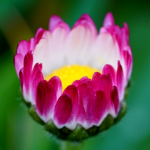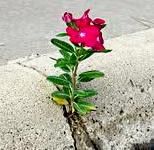
Once again, decades of inner work – as a writer and meditator – are taking on new form. Both activities stimulate and respond to major shifts in perception, to create coherent new narratives.
It was no surprise, then, to realize that a technique I’ve been using for years – a quasi-meditative centering exercise for making choices — has vital new applications in a new world being deconstructed by existential threats (biological, economic, climatic, and more).
The realization crept up gradually. I’d been noticing I had to make brand-new decisions about dozens of daily details that had been on autopilot before the world went berserk, before the future-event horizon shrank to less than a day. Out of habit, I applied an old four-square decision grid to come up with new solutions and to be at peace with them – relative peace: the best I could do, in tune with my principles and priorities, under bizarre and dangerous circumstances.
[I pause here to give thanks that I have such choices, as so many in these pandemic times do not. This post is dedicated to the relief of those who are suffering – in mild or cataclysmic ways.]
This privilege of having choices at all – for the moment – has its costs: too much unfamiliar choice, with potentially deadly stakes, limited options, and not enough reliable information, is distressing at first and potentially paralyzing or enraging over time. In sensing these experiences as a narrowing-down or constricting of life, it can help to remember that the ancient word-root angh- meant narrowing, a painful constriction. Angh- evolved into three related painful feelings: anguish, anxiety, and anger. An instant self-intervention if/when these feelings arise can be to think the question “What feels like it’s being narrowed down?” Just opening up to the question and pausing to let the mind articulate the spontaneous answers can keep it from escalating or dropping the mood into despair or confusion. This inner Q&A is helpful in itself, and it’s also good preparation for filling out the decision grid described below.
I’m publishing another version of the grid – a shorter, pragmatic one – because the webwaves are full of discussions of people falling into depression and outrage, and because the elaborate one was written in an earlier era, for a limited audience of meditators who were reaching deliberately beyond their comfort zones. These days, there are few or no comfort zones, and people are in a hurry to fix things. One theory of depression is that it’s initially formed by gridlock between opposing impulses; the biochemicals of distress carry the vibrations of frustration and hopeless/helpless perceptions, and, given enough time and intensity, the biochemicals – in their feedback loops with mood, energy, and cognition – become more powerful than any attempt to override them. So it’s worth at least trying to define the inner gridlock, as a step toward unlocking it, to see if constructive movement becomes more possible from an energized, aware center.
The technique I’m offering is designed to discover, or retrieve, the gentle timeless core of being, which is like the golden center of a flower, from which all the expressive petals emerge and expand, the way words, actions, and things flourish from a central source.
The intent of the technique is reflected in a quote from Brenda Ueland (If You Want to Write):
“…[W]e must try to find our True Conscience, our True Self, the very Center, for this is the only first-rate choice-making center.”
It can be hard to leap from global dread to personal inspiration, so for this version of the grid, I’m adding a practice technique to help get ready: an energetic self-awareness technique from the Realization Process. It might be a bit esoteric in the introduction (about embodying nondual consciousness), but there’s a wonderful exercise close to the end of this half-hour video that can be helpful for anyone. This could also be a good time to (re)read Eugene Gendlin’s Focusing, which offers a technique for processing difficult thoughts and feelings by focusing on the felt-sense of them, from a witness perspective. The nondual exercise and Gendlin’s focusing technique can be beneficial before, during, or after the grid process (once the subconscious starts expressing into the grid, it might keep pouring out new insights for days).
Another key to success with the grid is developing the capacity to see each eruption with compassion for the human condition (including oneself), through the eyes of the heart, with no judgment, only tenderness. It could take a stretch of deliberate gazing at a painful feeling before the warmth begins to pervade perception, but it’s worth the time and attention. It becomes easier to live with oneself and with anybody else. Although it’s conceived as a self-discovery instrument, it could also be used in interaction with others to facilitate conversation and even negotiations.
The Grid
First, notice when you are pulled in two opposite directions, each of which you’d like to pursue. Write down two options, A and B, in positive language for each one. (Figuring out the positive dimension of the alternative can be particularly helpful in sorting through confusion.) On a piece of paper, draw a vertical line down the center, and cross it with a horizontal line, making four squares. At the top of the left-hand column, write the positive desire for choice (A) (“I want to [A]”). At the top of the right-hand column, write the conflicting positive desire for choice (B) (“I want to [B]”). Between them, write “BUT/AND,” since they are mutually exclusive, and both are desired.
In the upper-left box (A1), write “Good results I expect or wish for from choice A.” In the upper-right box (B1), write “Good results I expect or wish for from choice B.” In the lower-left box (A2), write “Losses and risks I expect from choice A.” In the lower-right box (B2), write “Losses and risks I expect from choice B.” You can start filling in the boxes all on one page, but you’ll get much deeper, more expansive results if you make a separate page for each of the four boxes and focus on one page at a time. Take plenty of time and let your imagination go deep and wide on each box, deconstructing each option into its central impulses and values. These days, it might be especially important to venture into phases of grief/loss in each box (denial, anger, bargaining, depression, acceptance), and then envision what was truly meaningful about who/what was lost, so that the blessing of that experience is re-energized, possibly along with potential for it to be expressed in a new way.
When you feel complete, you can review the four squares in a grid. You might notice a kinship between A1 and B2 (on a diagonal), a kinship between B1 and A2 (the other diagonal). They are “consilient” compilations of hopes and concerns about your choices, offering a single “felt-sense” of the preferred option, even while holding the alternatives and risks in awareness. Once you create the grid for a simple dilemma, maybe a small (A) and small (B), and get the conceptual sense of it, and feel the thrill of discovery in the diagonal, you might start using it for bigger issues – and might discover patterns in choice-making over a lifetime that had been invisible before, not for self-blame but for revealing new options to choose differently, consciously. With the whole world self-deconstructing, it’s a perfect time to open one’s own organic gold mine of unalloyed wisdom.
Yes, there are large, new impediments to flourishing in these times, in the direction of either (A) or (B). The grid does not guarantee outcomes or fulfillment; it informs and energizes the self who’ll be moving through old and new challenges, watering the seeds of our best self deep inside, underground. Cracks in the concrete that seems to have been spread over our dreams can be opened to the sky by the power of life growing up from underneath.

Photo Credits – At the top: Pixabay / The final one: still looking for origin of this years-old image